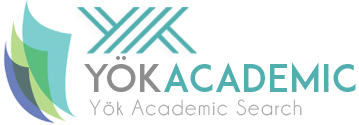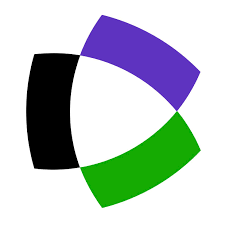Research Articles
Issue Reviewers
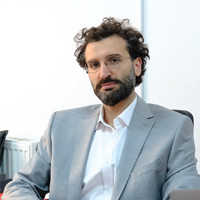
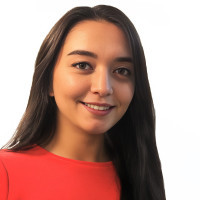
Ayça Yılmaz, Anadolu Üniversitesi Porsuk MYO Grafik Tasarım Bölümünde Önlisans (2012), Çanakkale Onsekiz Mart Üniversitesi Güzel Sanatlar Fakültesi Grafik Tasarım Bölümünde lisans eğitimini (2016), Anadolu Üniversitesi Eğitim Bilimleri Enstitüsü Güzel Sanatlar Eğitimi Anabilim Dalında doktora (bütünleşik) eğitimini (2022) tamamladı. Ulusal ve uluslararası yayınları bulunmaktadır. Yine ulusal ve uluslararası bir çok karma sergiye katılmış, afiş ve logo tasarımı alanlarında yarışmalara katılmış ve ödüller kazanmıştır. Yükseköğretim kurumlarında alanıyla ilgili ders verme deneyimine sahiptir.
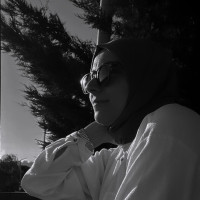

Vildan IŞIK is an artist and scholar whose work explores the dynamic intersections of painting, holography, visual culture, and emerging technologies. Born in Osmaniye in 1973, she graduated from Dokuz Eylül University’s Faculty of Fine Arts, Department of Painting in 2000 with a thesis titled “The Problematic of Chance and Coincidence in the 20th Century.” She later obtained her master’s degree in 2006 from the Institute of Social Sciences at Cumhuriyet University, where her thesis—“Art Debates in Turkish Painting between 1930–1970 and the Artist at the Centre of the Debates: Bedri Rahmi Eyüboğlu”—focused on the role of Eyüboğlu in shaping critical discourse within modern Turkish art.
Her academic and artistic journey has consistently bridged theory and practice. In 2012, she conducted research on holography in Seoul, South Korea, which laid the groundwork for her subsequent doctoral thesis entitled “Holography as a Medium of Artistic Expression”, completed at Gazi University’s Institute of Fine Arts in 2013. This study culminated in a curated exhibition that explored the relationship between holography, painting, and photography. She earned her proficiency in art (the equivalent of a doctoral degree) and was awarded the title of Associate Professor in 2016.
Since then, she has been serving as a faculty member at Düzce University’s Faculty of Art, Design, and Architecture, the Department of Basic Art Sciences. Prior to her current appointment, she held various academic and institutional positions between 1999 and 2014.
Dr. Işık’s research and artistic practice center on the evolving relationship between art and digital media, with particular emphasis on artificial intelligence, iconography, and interdisciplinary aesthetics. She has published extensively in peer-reviewed journals and presented her work at numerous international conferences on art and design.
Her recent solo exhibitions, Urban Mutation (2024) and Holographic AI Glitch (2025), engage with themes such as algorithmic error, glitch aesthetics, and urban transformation. Through a practice that integrates critical theory, technological experimentation, and visual inquiry, Vildan IŞIK continues to make a multifaceted contribution to contemporary visual culture as both a researcher and an artist.
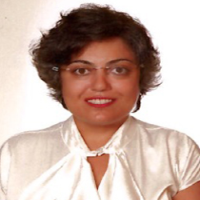

In the current academic landscape, Dr.Deniz is deeply entrenched within the scholarly echelons of Ankara University's Department of Foreign Language Education, where his intellectual pursuits traverse a labyrinthine expanse of scholarly domains. His scholarly proclivities encapsulate the intricate intersections of Educational Sciences, English Language Education, Educational Technology, Computer-Based Teaching Methods, Adaptive Learning, Blended Learning, and the profound philosophical undercurrents that define the realm of Education. Moreover, his scholarly trajectory is intricately interwoven with a meticulous examination of the historiography of Education, particularly honing in on the complex entanglements within the Turkish-American Relations and the consequential paradigm shifts witnessed within the Turkish Educational System in the post-1950 era. This scholarly odyssey seamlessly dovetails into his erudite explorations in English Language and Literature, Psychology, and the pedagogical nuances of Teacher Education, Educational and Instructional Technologies. Beyond these engagements, he persists in his capacity as a peer reviewer for a multitude of esteemed national and international scientific journals. Besides his roles as a reviewer for international journals, Dr.Deniz also serves as an editor and language editor, thereby contributing significantly to the academic community.Dr. Deniz has likewise partaken in an array of internationally convened symposia spanning nations such as Germany, England, Austria, and Cyprus. Beyond his tenure as a Lecturer at Ankara University, Dr. Deniz is immersed in profound undertakings for myriad distinguished educational entities, concentrating on the synergetic alignment of linguistic studies and language pedagogy with technological advancements, aspiring to amplify the dynamism and efficacy of this integration, thereby augmenting its advantages for language acquirers. In addition to his undergraduate, graduate, and doctoral education, Dr. Deniz has successfully completed internationally recognized courses in Language Education in England, including TESOL, CELTA, and DELTA. Dr. Deniz has also excelled in training across diverse domains such as awareness of education for individuals with disabilities, workplace stress and stress management, professional ethics and law, 5G mass education tools, statistical data interpretation, adult learning principles, time management and productivity, public ethics, and fundamental occupational health and safety. Furthermore, Dr. Deniz frequently participates in various projects both in Turkey and several European countries, dedicated to the most effective acquisition and instruction of the English language.
For his personal webpage, please click on the following link: https://avesis.ankara.edu.tr/sdeniz
Aim & Scope
USTAD has adopted the principles of researching and sustaining art and design, primarily in line with the principles and reforms of Mustafa Kemal Atatürk. For this reason, in line with the decisions taken by UNESCO in 2003 to adhere to the "Intangible Cultural Heritage" list, It is to follow the folklore, art, and cultural heritage studies in the world, to publish research on these subjects, and to carry the studies in this field to the international level.
For these purposes, USTAD publishes in Turkish and English.
Original research-based articles that will fill a gap in the field, Introduction, and criticism articles that will contribute to the development of the field, Translations, short reports, and information notes that will contribute theoretically and methodically to social culture, folklore, ethnology, anthropology, nature and ecology, visual arts, literature, sociology, psychology, marbling art, calligraphy, tile making and decorative arts, and cultural heritage studies. Report and short communications, Compilations from the field, or written sources.
Manuscripts to be published in USTAD must not have been published anywhere before, have not entered the refereeing process of other journals, or have not been rejected. Papers presented in a scientific meeting cannot be published in USTAD if the full text is published in the proceedings booklet.
A maximum of two (2) articles by an author can be published in the same year but not in the same number.
Author Guidelines
General rules:
Title: It should not exceed 12 words, should be written in bold and capital letters 14 Pt, and its second language equivalent initials should be capitalized just below the title; 12 Pt should be written in average thickness. If the article is in Turkish, the second language should be English, and if the article is in English, the second language should be Turkish. Turkish dialects written in Latin letters are evaluated. The second language of these articles should be Turkish.
Name of the Author: It should be written under the Title of the Article, the job title, Orcid, institution address, and e-mail information. It should be written 11 Pt in bold 12 pt under the English title.
Abstract: Must be at least 250 words. Sources, figures, charts, notes, etc., should not exist. At least three and seven keywords should be given just below the abstract. Abstracts and keywords should be prepared in Turkish and a second language. The questions that the reader needs to find answers to are listed below.
What are the study's aim, method, and most crucial finding or findings? (must be explained with at least 3, at most five sentences) In the introduction and the research aim, which question does the study seek to answer? Which research question(s) is it based on? Why is this study necessary? (Clear information should be given to the reader to create a clear idea) What gap does the study fill, and what contribution does it make to the field? (It should be explained clearly)
Which method was used in the study?
What are the findings and discussions?
What are the consequences? What is the recommendation of the article?
Article Text: Manuscripts should be written with 1 line spacing and 11 font size, not exceed 7000 words in English, and should be original. Manuscripts should be written in MS Word program and in Times New Roman font. The article should start with the introduction, the hypothesis of the article should be put forward, the development section (which can be supported by sub-headings and sub-headings) should consist of data, observations, opinions, comments, and discussions, and the conclusions should be explained with the support of suggestions.
The article should be in Turkish, and the abstract in a second language should be 3.5 cm on the left and 3.5 cm on the right. The text of the article should be adjusted so that the left and right margins are 2.5 cm.
Citation: Footnotes should never be used in citing references. According to this:
In the text (Surname, 2010:9),
If more than one author's work published in the same year is cited (Erdal, 2010a, Erdal, 2010b...)
In publications with two authors (Surname, Surname, 2015: 9),
In publications with more than two authors (Surname et al., 1995: 9),
(ty) in the sense of "no date" in publications with unknown dates, (Surname (ty)),
(I), (Surname, 2009: (sy)), meaning "no page" in publications whose pages are unknown.
If the author is unknown, the source is not shown,
If an oral source is used, the source person's information should include Name, Surname, Date, and Place of the Interview.
If the internet is cited, it should include the site name, author surname, and access date (ET); (Wikipedia, Surname, ET: 03.01.15).
Unpublished articles besides undergraduate, master's, and doctoral theses cannot be cited as references.
Bibliography: At the end of the text of the reference article, it should be written alphabetically according to the authors' surnames. If an author has more than one publication, it should be shown as (1980a, 1980b) if there are publications published in the same year by an author, according to the publication date.
According to this;
Books
Surname, A (Year of Publication). Title of Work. Publication Place (Province): XXX Bookstore.
Surname, A (2009). Effective Packaging Design. Bursa, Türkiye: Dora Publishing House.
Surname, A (2012). Educator İbrahim Alaaddin Gövsa, Shedding Light on the Future. Bursa: Ezgi Bookstore.
Other Publications
Works such as newspapers, magazines, encyclopedias, anthologies, novels, plays and films, story and poetry books, short stories, articles, book chapters, letters, conferences, speeches, conversations, and personal interviews, unpublished theses should be written in italics and double quotes as follows.
Surname, A (1997). “On Turkish Emblem Design”, Istanbul: Cumhuriyet Newspaper, no: 216164, p.2.
Surname, A (2011). "A revision of trepanations in Anatolia with new cases." NJ, England: International Journal of Osteoarchaeology, no: 21, Pp.505-534.
Resources with Incomplete Information:
If the source used does not specify the city where the work was published, Yyy (no place of publication) is used where this information should be in the imprint, yy (no publisher) if the place of publication is not specified, and ty (no date) is used if there is no information about the date of publication.
Surname, A (2012). Shooting Techniques in Stage Photography. Century: Ezgi Bookstore
Surname, A (2012). Shooting Techniques in Stage Photography. Bursa: century.
Surname, A (ty). Shooting Techniques in Stage Photography. Bursa: Ezgi Bookstore.
Multiple Authors:
The first author's surname is written first, followed by the first letter of the name, and the first letter of the name of all other authors is written, followed by the surname—Commas separate Authors.
For magazines:
Surname, A., A, Surname, A. Surname (2020). "Bursa Migrant Villages Photographs of Living Areas." International Journal of Art Design and Education, vol. DOI.
For Books:
Surname, A., A. Surname, A. Surname (2012). Shooting Techniques in Stage Photography. Bursa: Ezgi Bookstore. ISSN.
Texts in Electronic Media: For reference to texts in electronic media, those whose author, title, and publication date are indicated should be preferred for reliability. Imprint information follows in the following order: author, Last Name, First Name, and the text's title (in quotation marks and italics). Date of the source, if any; access date (ET); the site's address.
The example below should be followed.
Surname, A "On Typography." Yyy: 2002, ET, 07.01.2015, www.aed.org.tr.
Submission of Manuscripts: Manuscripts prepared by the above principles are uploaded to the journal's official website by the author. If necessary, according to the nature of the article, the similarity report and the author's copyright form must be uploaded together with the ethics committee report. Authors are required to use the Article Template.
Editorial Corrections: Minor minor corrections that are not essential during publication can be made by the editorial unit. These corrections are based on TDK Spelling Guide and Dictionaries.
Ethical Principles and Publication Policy
Publication Policy
General Principles: The International Journal of Art Design and Education (International Journal of Art Design and Education) started its publication in 2020, is published twice a year in spring and winter terms as of 2023. USTAD will be published online on 20 May / 20 December. All articles can be read online free of charge at https://uludag.edu.tr/ustad and http://sanatvetasarim.com. As of 2020, the entire archive can be accessed free of charge by the open access policy.
Each author, including editors, can publish at most one annual publication at USTAD. (except unique numbers)
USTAD does not charge the author for article publication or other expenses. USTAD, when it deems necessary, opens a particular issue for discussion in certain areas or aims to express its gratitude to respected scientists and artists who have had a say in their fields at home and abroad. The decision and authority in this matter belong to the scientific and editorial boards.
Open Access Policy: USTAD is a party to the Budapest Open Access Movement (BOAI). According to BOAI, Open Access is “peer-reviewed scientific literature, via the Internet; can be freely accessed, read, downloaded, copied, distributed, printed, scanned, linked to full texts, indexed, transferred as data to software and used for any legal purpose without financial, legal and technical barriers.
Price Policy
No fee is charged from the author for the articles to be published in the International Journal of Art, Design, and Education Index.


